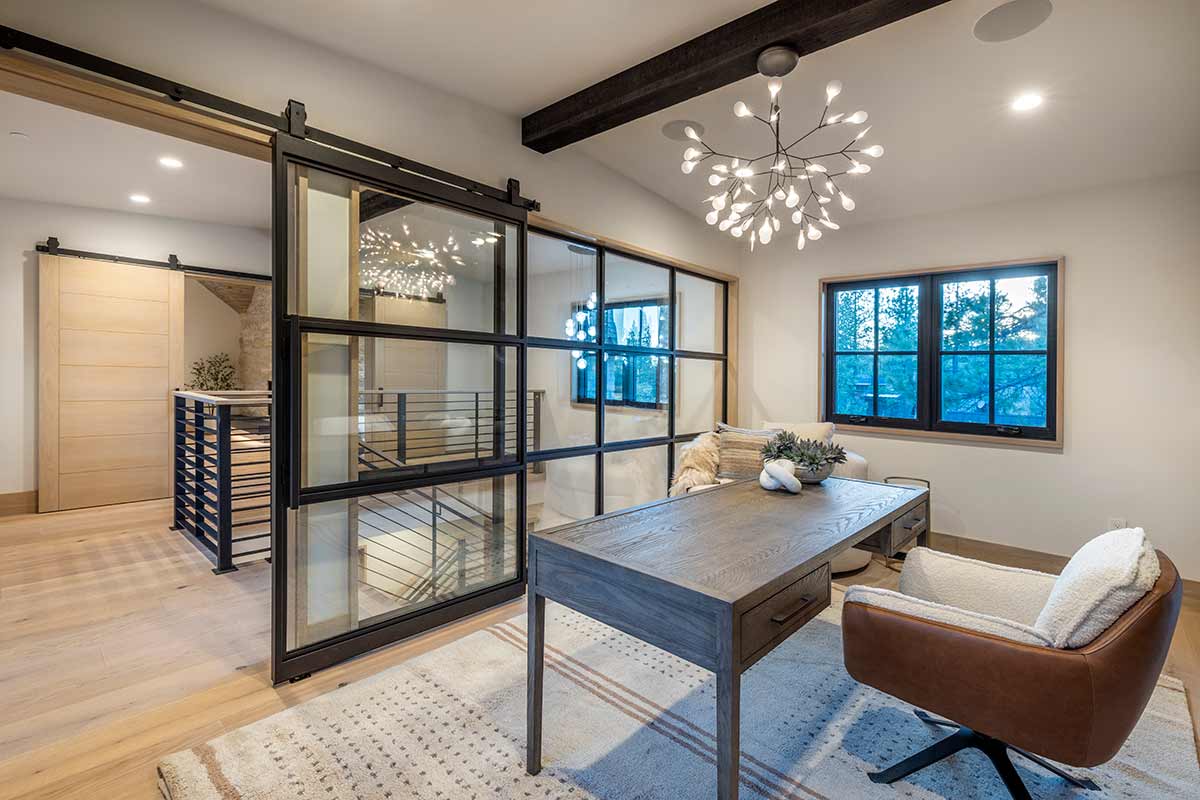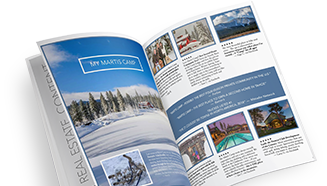There’s a long-term trend taking hold in the Lake Tahoe luxury real estate scene, one that’s showing up in blueprints, new construction projects and building remodels across the landscape. The home office is here. In a big way. And nowhere has the workspace been more elevated to the status of art than at Martis Camp.
Here, some of the region’s leading architects and designers discuss the proliferation of the workspace in today’s plans and share tips and insight on what to consider when adding a home office to an existing home or what to think about when working up new plans that include a workspace in that dream home. Read on and you’ll encounter some inspiring samples of offices that are a far cry from what your father’s den looked like.
Factors behind the resurgence.
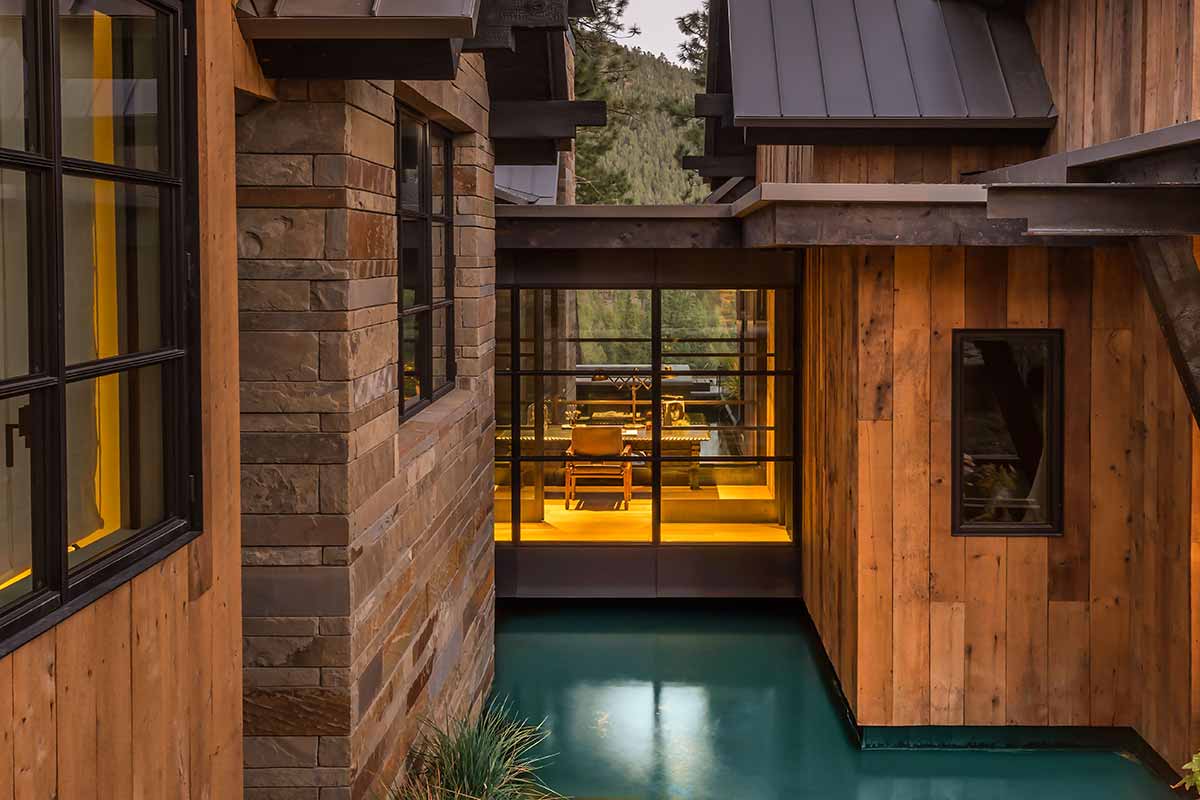
“I can’t recall a post-Covid project we’ve had that hasn’t incorporated a home office of some variety,” said Scott Gillespie, Principal of the Truckee-based Sandbox Design + Engineering firm that has designed homes throughout Martis Camp. And as far as trends go, Gillespie sees this as anything but temporary. “It’s here to stay, at least when it comes to resort areas such as Martis Camp,” he added. “Once our clients have had the chance to work remotely and spend meaningful time here, it’s hard to go back.”
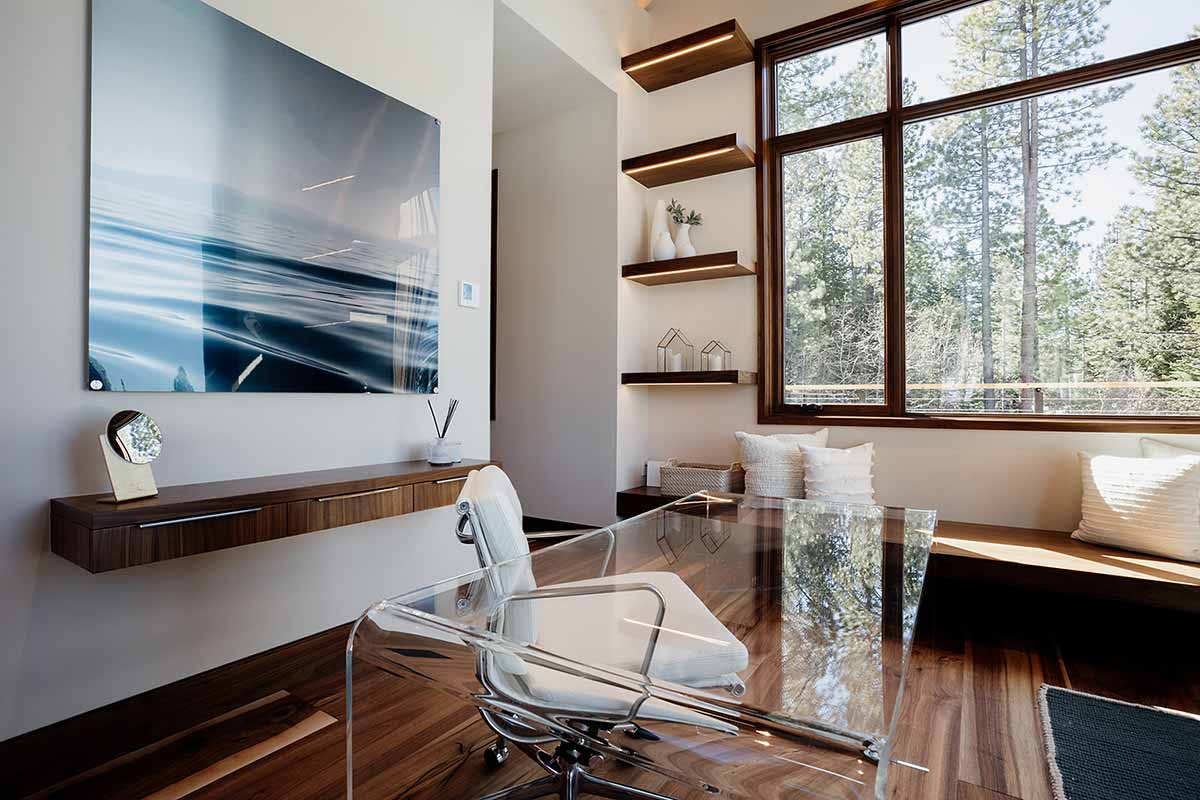
Megan Bristol of Tahoe Modern in Truckee works with clients who seek balance in their lives and who retreat to their Lake Tahoe/Truckee luxury homes as a sanctuary not only for living, but also as a place where they can maintain connection with their work lives. Like Gillespie, Bristol views the significant uptick in home workspaces as fallout from the recent pandemic. “It fueled a surge in long-term residency in Lake Tahoe’s second home communities,” she noted.
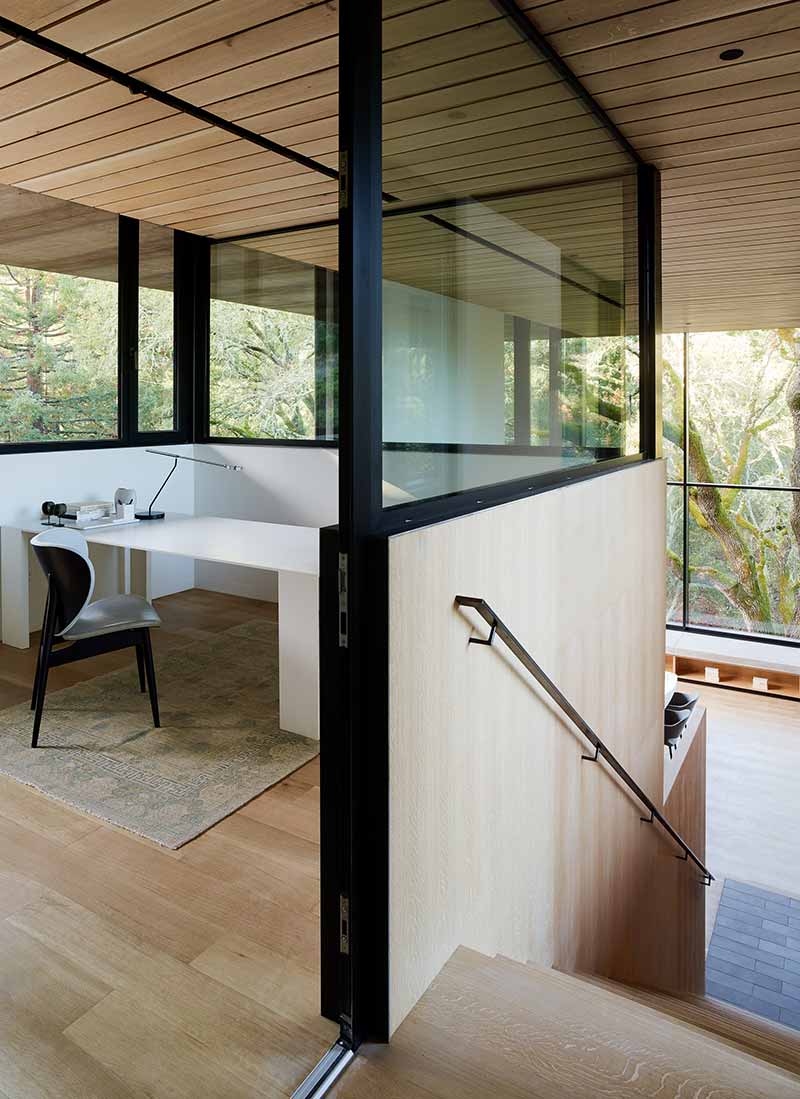
Finally, the home workplace is no longer the domain of merely the breadwinners in the house. According to architect Greg Faulkner of Faulkner Architects, home offices are definitely becoming more the norm but multiple offices within the home are becoming more common as well. “Quite often, every member of the household is seeking their own sort of either play space or workspace,” Faulkner stated.
Planning from the start.
When architects get the word from clients that they want to include a workspace environment into their building plans (something happening more frequently), a lot of considerations are taken into account. “Privacy seems to be the most important quality my clients desire in a home office,” mentioned Todd Mather of TGMA Architect. “A well-insulated room, including the door and all walls, ceiling and floor is key to a successful office,” he added. “Several questions need to be answered, including what time the office is most used during the day or night. Setting priorities is the most important thing when looking at designing a home office,” Mather added.
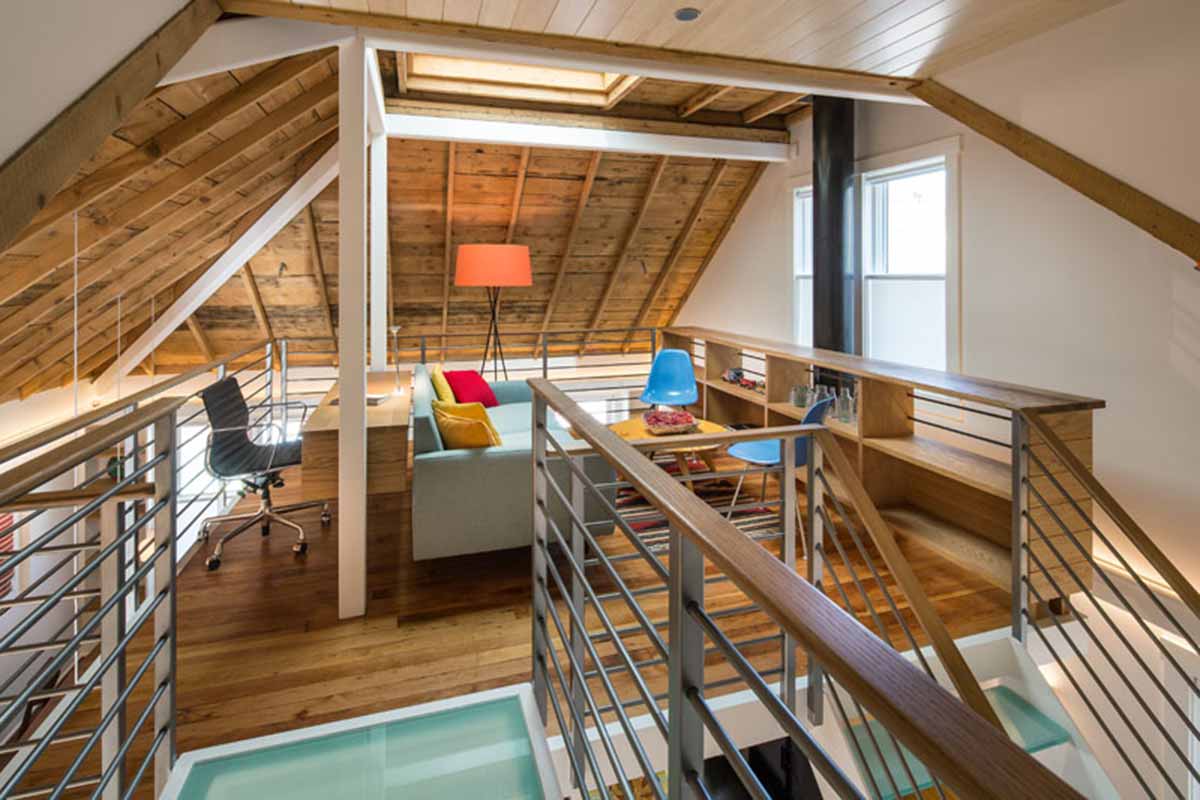
Bringing the office into existing homes.
Let’s say you’ve got a Martis Camp home and you want to add a home office or even create an additional workspace within your home. Not an uncommon situation. When that decision arises, architects, designers and homeowners tend to target one space in particular. “Usually, it’s the smallest, least-used bedroom that gets converted,” said Gillespie. Faulkner agrees, adding, “Bedrooms come first, with garage space not far behind. It all depends on what kind of work needs to be done and what kind of furniture and accessories homeowner are interested in.” For projects where clients simply want a makeover for their office, Natalie Zirbel of Zirbel Architects often advises considering a Zoom Wall to add interest and depth to the walls of the office, a backdrop effect popularized by the proliferation of Zoom meetings.
Comfort is king.
Comfort is the most critical factor to consider when planning a workspace within one’s home. “This needs to be a space that you enjoy spending time in, ideally with abundant glass for light and views,” said Gillespie, who designed the Martis Camp home office in this photo with abundant windows from a bridge-like element spanning the property’s water feature. It’s not uncommon for others to do as Gillespie has done on a few occasions and create a connection to a deck or terrace to further enhance that sense of being closer to that environment that so defines Martis Camp. Bristol seconds that notion, adding “our clients come to work in Lake Tahoe to connect to the beauty of this area and lean into the slower-paced, activity-focused lifestyle. In every introductory design call, our clients identify comfort as the most important consideration to the overall design. This extends to their workspaces too.”
Location, location, location.
Where you place your workspace within your home is a critical decision, one best addressed in the early stages of planning. Many prefer to have their offices close to their primary suite, a location they can reach when inspiration strikes or that gives them time to ramp up for the day or wind down for the night. Others will tuck it beneath staircases or have it punch out from hallways or even use the home’s “crow’s nest” as their escape. In most situations, windows – either exposed to the outside environment or even windows and sliding glass doors with views to other parts of the home are preferred. Mather poses a question that many homeowners may need to take into account; “Does the user need to still be available to other members of the house, such as is the case with families with small kids where they need to be within earshot?” Taking time to consider where you want your workspace to take shape in your home is a consideration that can’t be understated.
Silence is golden.
You know that pillow fight taking place in the bunk room? Oh, you don’t, huh? That’s good. That’s as it should be – a place where they can unload their energies while you simultaneously conduct your Zoom call, each contentedly in their own bubble.
Having a quiet environment is critical in allowing you to focus. “Privacy seems to be the most important quality my clients desire in a home office. A well-insulated room with acoustic privacy, including the door and all walls, ceiling and floor is key to a successful office,” said Mather.
For dampening sounds and helping enhance the sense of quietude within the workspace, Faulkner turns to “acoustically absorptive materials for reflected noise within the space and sound-rated assemblies with isolated structure and mass for sound transmission to adjacent spaces.”
To help mitigate noise, Gillespie suggests it may be enhanced through good construction and well-insulated walls, along with doors that close tightly. “Barn doors look cool,” he says, but they aren’t very effective in mitigating noise.” Mather echoes that sentiment when converting rooms into offices, adding, “Insulating the walls, ceiling and floor to create a more soundproof room not only for the user but for the rest of the home’s occupants. We recommend a combination of blown-in, closed-cell spray foam insulation with a layer of loose fill or fiberglass batts. The combination of two types of insulation is very effective to reduce sound waves at variable hertz (high, mid, and low pitches).”
Lighten up.
Almost across the board, designers and architects acknowledge the positive influences of light within the workspace. That’s why an abundance of glass is often incorporated into office plans. Bristol strives to “design all of our home offices, or temporary workspaces, around large windows with a view to help bring a bit of the outdoors, indoors.” Faulkner expressed the need to bring a “softness to the spaces,” adding that “light is the most important element for humans in an environment to complete detail work, even when it involves a computer screen.”
A critical decision relates to the mood of the workspace, especially one within an environment as stunning and stimulating as what one finds at Martis Camp. “Your workspace needs to be a space that you enjoy spending time in,” states Gillespie, something that more and more homeowners are discovering in their Martis Camp homes.
Take a tour of Martis Camp’s latest home listings and Martis Camp lots for sale in Lake Tahoe and you’ll see examples of not only the finest luxury homes for sale in Truckee, Ca but you’ll also discover that community where the best of everything comes together to create the life you’ve dreamed of and the legacy you’ve longed for.

